Cats have been living with humans for a long time. One of the things we love about them is their soft fur. It feels great to pet a cat and their fur is pretty to look at. But how did cats get such smooth and fluffy fur? What explains this unique trait that makes us all go weak in the knees when petting a cat?
Don’t be surprised if you want to give your cat some extra love after reading this post. You will learn everything there is to know about why they are so irresistibly soft!
Why Are Cats So Soft?
They Have A Double Coat
Cats have two layers of fur – an outer coat and a softer undercoat. The outer coat is thicker than the undercoat and helps protect cats from dirt, water, and other elements.
The double-coat also helps regulate their body temperature by trapping heat close to their bodies so they stay warm in the cold weather.
The undercoat is the soft fur that we all love to pet. This layer is made of short, fine hairs called “down” hairs which are very light and fluffy.
The combination of guard hairs and down hair give cats their unique texture – a smooth outer layer with a softer underlayer that makes them so irresistible to pets.
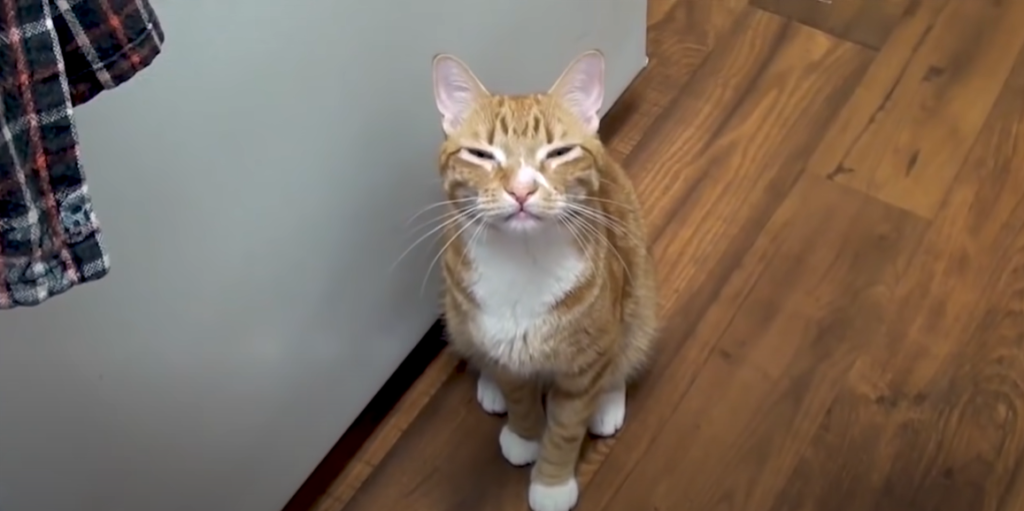
Cat Breeds Vary in Softness
Different breeds of cats have different types of fur. For example, some breeds have long fur that is silky, while others have short fur that feels soft.
Additionally, the fur on different parts of a cat’s body can also differ in texture – for example, a long-haired cat may have wiry fur on its legs and tail, but softer fur on its back or belly.
If you want a cat that feels soft, there are some breeds that are known for their soft fur. Ragdoll cats, Maine Coons, Persians, and Birman cats all have fluffy coats that feel great to pet. [1]
Proper Grooming Is Essential
Groom your cat regularly to keep its fur in good condition. Brushing helps prevent mats and keeps the fur clean. It helps remove dirt, oils, and dead fur which can make your cat’s coat feel rough or look dull.
Make sure you’re using a brush specifically designed for cats – it should be gentle enough not to irritate their skin but firm enough to effectively remove dirt and debris.
It’s Their Genetics
The genes of a cat play a big role in how soft the cat’s fur is. Breeds like the Siberian, Ragdoll, Persian, and Maine Coon have inherited a gene that gives them an extra thick coat of fur. This is why these cats look so fluffy.
To Protect The Skin
The fur on cats not only keeps them warm, but it also protects their skin. The hair follicles produce oils that help keep the skin moisturised and healthy.
This is important for cats because they spend a lot of time outdoors and can be exposed to many different temperatures and weather conditions.
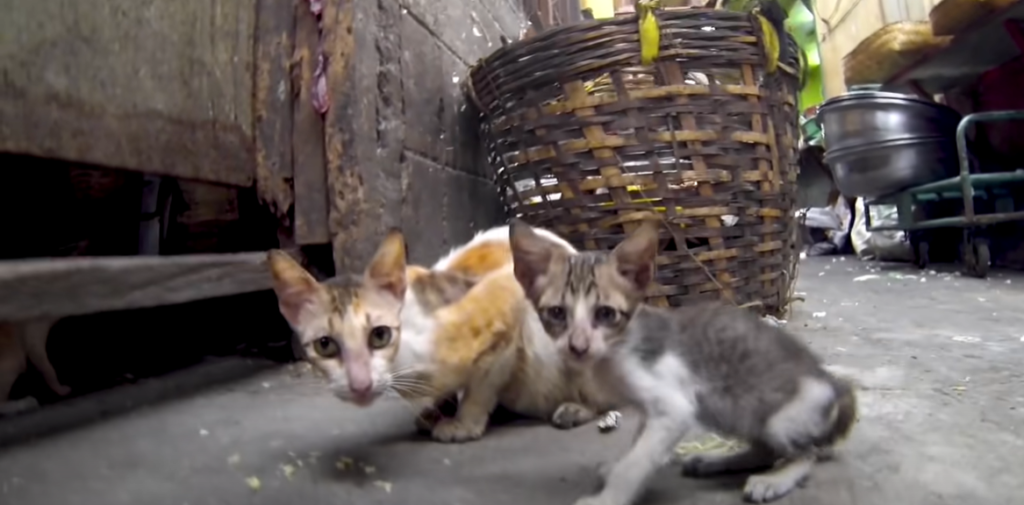
Good Nutrition
It is not just grooming that keeps cats’ fur healthy and soft. A diet with enough lean proteins and essential fatty acids helps keep cats’ coats nourished and in very good condition. Vitamins such as biotin, vitamin E, and omega-3 fatty acids also help keep their fur shiny and soft.
They Have Special Oils That Keep Their Fur Soft
Cats also have special oils in their skin that act as a natural conditioner for the fur and keep it soft and shiny.
This oil is called sebum and it helps cats maintain healthy fur and skin. Sebum also has an anti-bacterial and antifungal effect which helps keep cats free from infections.
Why Are Some Cats Softer Than Other Cats?
There are three things that affect how soft a cat’s fur is – the breed of cat, age, and nutrition. Kittens usually have softer fur than adult cats because their coats are not fully developed yet.
The genetics of the breed also plays a big role in how soft the fur feels – some breeds like Ragdolls or Siberians have very thick coats of fur that feel luxurious to the touch. Lastly, a diet with enough lean proteins and essential fatty acids will help keep cats’ coats in top condition.
Why Are Cats Softer Than Dogs?
Cats have a double-coat of fur which helps them regulate their body temperature and also makes them feel extra soft to the touch. They also produce natural oils that act as a conditioner for the coat, making it look shiny and soft.
Dogs usually don’t have this double-coat and also do not have these natural oils in their skin which can make their fur feel coarser.
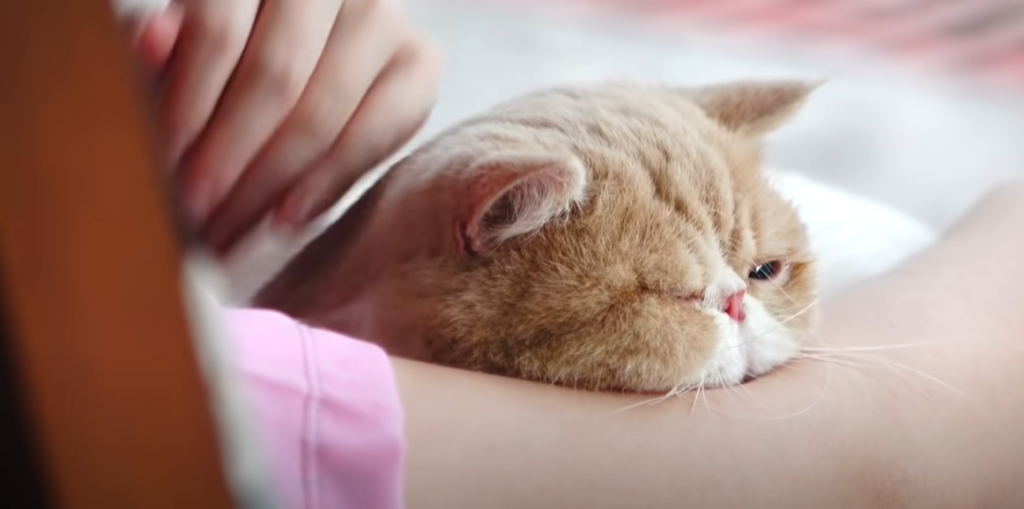
Does Mood Affect A Cat’s Fur?
Yes, cats can feel worried or stressed, which can affect their fur. When a cat feels anxious, they may groom themselves more often. This can make their hair look dull and matted.
Cats are naturally soft and fluffy creatures, but their genetics, diet, and grooming play a big role in how soft and shiny their fur is.
With proper care and nutrition, cats can have luxurious coats that make them irresistible to cuddle up with.
How Can I Make My Cat’s Fur Soft and Shiny?
Proper Nutrition
A diet with enough lean proteins and healthy fats is the key to keeping your cat’s fur soft and shiny. Look for a food that has biotin, vitamin E, and omega-3 fatty acids. These vitamins help keep their coats nourished and looking great.
Regular Grooming
Brushing your cat regularly helps get rid of dirt and loose hair. This makes the coat look shiny and clean. Cats also groom themselves by licking their fur to distribute natural oils throughout the coat.
A Healthy and Happy Environment
Cats need a place that is safe and comfortable. They also need things to do so they are not bored.
This will help reduce stress which can make the fur look dull. Show your cat that you care by playing, cuddling, or just talking to them every day.
What Breeds Have The Softest Fur?
Maine Coon
The Maine Coon is one of the most popular and loved breeds. Its thick coat of fur feels luxurious and it is very soft. The Maine Coon’s fur is also usually longer and less dense than other cats, making it a good choice for cuddling.
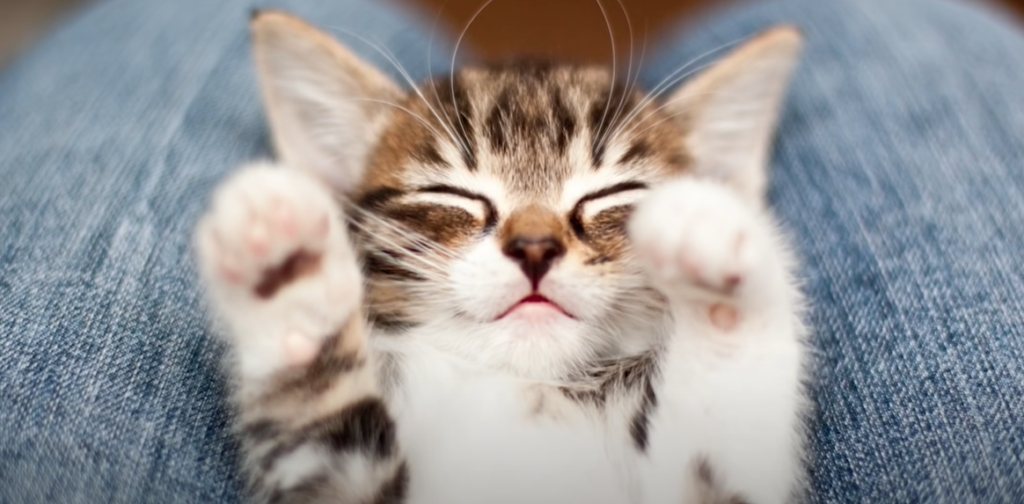
Ragdoll
The Ragdoll breed is known for its long hair and fluffy coat. Its fur is very soft and thick, making it a great choice for cuddles. The Ragdoll’s coat requires regular grooming, but with proper care, it can look glossy and beautiful.
Siberian
The Siberian cat has a thick double-coat of fur that feels soft and luxurious. The coat is also naturally glossy, making it look expensive and feel like velvet to the touch. Siberians are a great choice for those looking for a cat with a silky-soft coat.
Persian
Persian cats have fluffy coats. The fur is not as thick as some other breeds, but it still feels soft and silky to the touch. Persians also have wide eyes and a flat face which makes them look cute.
Birman
The Birman is another popular breed with a long coat of fur. Its fur feels very soft and luxurious, making it great for cuddling. The Birman’s coat needs regular grooming to keep the fur looking glossy and beautiful.
British Shorthair
The British Shorthair is one of the oldest cat breeds. It has a short coat that feels soft and fluffy, making it a good choice for people looking for a cat that loves to cuddle. The British Shorthair’s coat does not require much grooming to look its best.
Devon and Cornish Rex
The Devon and Cornish Rex breeds have short, curly coats that feel very soft and luxurious to the touch. These cats also have large eyes and an expressive face which make them look very cute.
Different breeds have different types of coats that may feel softer or more luxurious than others.
But no matter what type of cat you have, it’s sure to be irresistible when cuddling up with them. With the right care, your cat’s coat will always be soft and glossy.

FAQ
Why are cats so soft and squishy?
Cats have short, fine fur that feels soft and squishy to the touch. This is due to their genetics and the oils their bodies secrete which help keep their coats shiny and healthy.
What makes a cat’s fur feel so soft?
The texture of a cat’s fur depends on its breed, diet, and regular grooming. A healthy diet that includes enough lean proteins and healthy fats helps keep the fur soft and shiny.
Regular brushing also helps get rid of dirt and loose hair, making the coat look glossy and clean.
Are all cats soft?
No, not all cats are soft. Some cats have thick fur coats which may feel coarser than others.
The texture of the fur also depends on the breed and genetics, as well as regular grooming. Cats with longer fur coats may feel softer than cats with short fur coats.
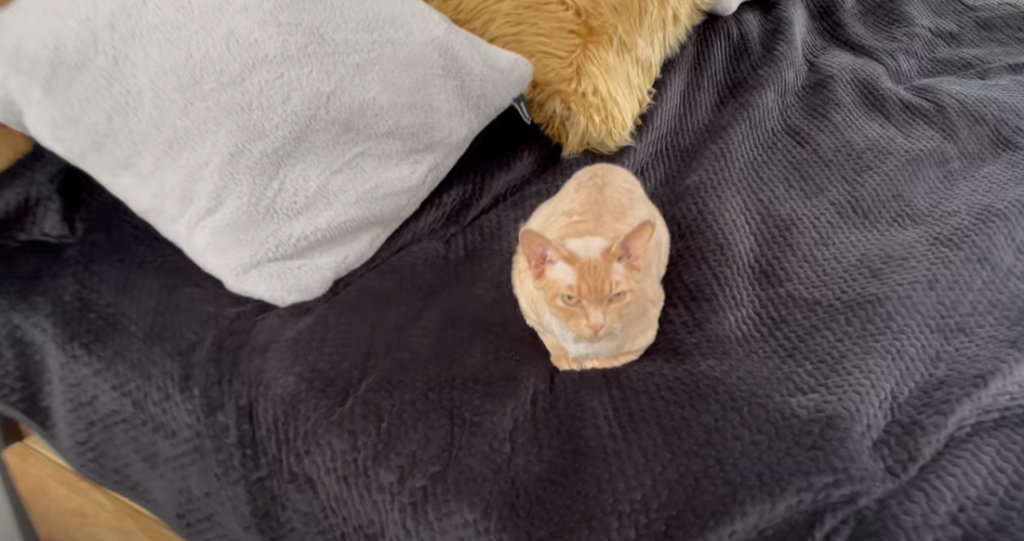
Why are cats so cuddly?
There are a few reasons why cats may be cuddly. One reason is that they feel safe when they are close to their owners. Being close makes them feel secure and provides comfort if they are feeling scared or stressed.
In addition, cats have an instinctual need for attention and affection that makes them want to cuddle with their owners. Finally, some cats simply enjoy the physical warmth and comfort of being held close.
Do cats get softer the more you pet them?
No, cats do not get softer the more you pet them. You can help keep their fur soft and shiny by brushing them regularly, but petting will not make a cat’s fur softer over time. In fact, too much petting can lead to skin irritation and hair loss in cats.
When you are petting your cat, be gentle and pay attention to its body language. Cats will let you know when they have had enough.
Why are cats so soft behind their ears?
Cats are usually softer behind their ears because that is where they groom themselves the most. The oils from their saliva help to keep the fur in this area soft and glossy.
Additionally, cats enjoy being scratched and petted behind their ears, so regular grooming helps them relax and feel comfortable.
Do cats like when you squish them?
No, cats usually do not like it when you squish them. Squishing a cat can make it scared and uncomfortable. If your cat likes to be petted, try using light strokes instead of squeezing or pulling its fur.
Also, watch how your cat is reacting – if it moves away or stops purring, then it probably does not like being petted.
Do cats get their feelings hurt easily?
Cats can get their feelings hurt easily. This is especially true when it comes to interactions with their owners. Cats are sensitive animals and need to be treated with care and respect.
If you scold or yell at your cat, it may become scared or stressed out and stop trusting you. On the other hand, if you treat your cat kindly and patiently, it will be more likely to form a strong bond with you.
What is the best way to show affection to a cat?
The best way to show affection to a cat is through gentle petting, brushing, and cuddling. Cats enjoy being close and feeling safe with their owners.
They also love being scratched behind the ears or on their chin, as it releases endorphins that make them feel happy. Additionally, playing with your cat is a great way to bond and show affection.
How can I keep my cat’s coat soft?
The best way to keep your cat’s coat soft and shiny is by feeding it a healthy, balanced diet. Foods that are high in lean proteins and healthy fats will help nourish its fur from the inside out.
Additionally, regular grooming sessions with a brush or comb can help get rid of loose hair, dirt, and debris. Finally, giving your cat lots of love and attention will help keep them happy and relaxed which can also contribute to a softer coat.
What can I do if my cat’s fur isn’t soft?
If your cat’s fur isn’t as soft as it should be, there are a few things you can do to help. First, make sure your cat is eating a balanced diet and being groomed regularly.
Additionally, you can apply pet-safe oils or ointments to your cat’s fur to nourish it. If the problem persists, you should talk to your vet about possible causes and treatments for dry or dull fur.
What else do cats need to keep their fur soft?
Cats need other things besides food, grooming, and love to keep their fur soft. Access to clean water is essential for cats as it helps keep their skin and coat hydrated.
Additionally, cats should have plenty of safe places to rest where they can feel comfortable and secure. Finally, cats need regular exercise and playtime to stay healthy and keep their fur in good condition.
How often should I brush my cat?
You should brush your cat at least once a week, but more often if it has long or thick fur. Brushing helps get rid of dirt and debris from their coat and can help keep it looking shiny and healthy.
Additionally, cats usually enjoy the extra attention from grooming sessions, so it’s a great way to bond with your furry friend.
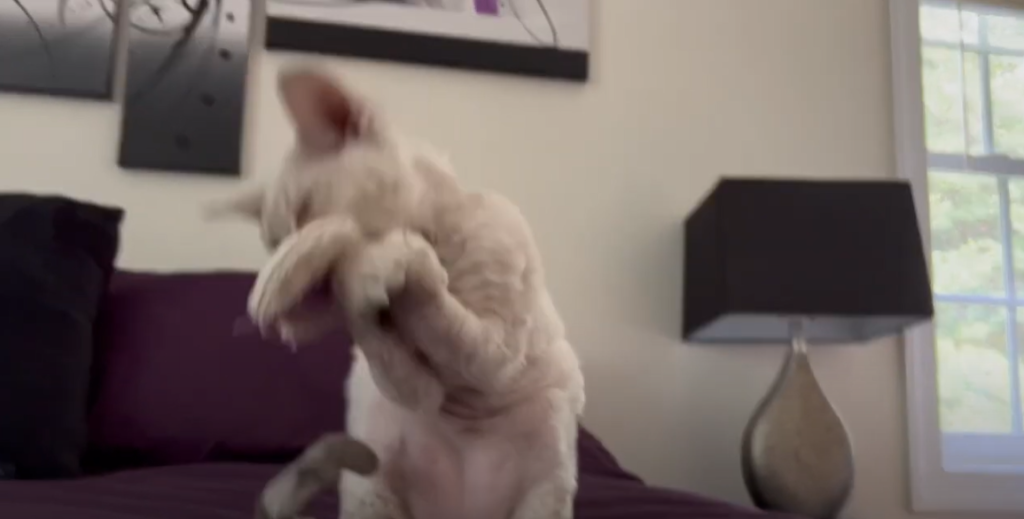
Which type of brush is best for my cat?
The type of brush you use will depend on your cat’s coat. For short-haired cats, a rubber curry comb or curry brush is usually the best choice. For long-haired cats, a slicker brush or metal comb can help get rid of tangles and mats.
Finally, if your cat has a particularly thick coat, then you may want to try a deshedding tool in order to remove excess fur.
Does my cat need to be bathed?
Most cats don’t require regular bathings, as they are adept at cleaning themselves. However, if your cat has gotten into something particularly dirty, such as the garden or a muddy puddle, then it may be necessary to give them a bath.
When bathing your cat, make sure you use warm water and a mild cat shampoo to keep their coat soft and prevent skin irritation.
Do cats like to be brushed?
Most cats like being brushed, especially if it is part of their regular routine. Brushing helps spread natural oils throughout the coat and can also make the cat’s skin feel good. Plus, brushing is a great way to show your cat some extra love and attention.
Does brushing help cats shed less?
Yes, brushing helps cats shed less. Regular grooming sessions with a brush or comb can help remove loose hair and keep the coat looking clean and healthy.
Additionally, it can help reduce the amount of dander in your home, which is helpful for those who suffer from pet allergies.
Are there any other benefits to brushing my cat?
Yes, there are many benefits to brushing your cat. Regular grooming can help keep their fur soft and shiny, reduce the amount of shedding, and prevent mats from forming in long-haired breeds.
Additionally, it’s a great way for you to bond with your furry friend and show them some extra love and attention.
Do cats need regular trips to the groomer?
Most cats do not require regular trips to the groomer, as they are very capable of keeping themselves clean.
However, if your cat has long or thick fur then it may be necessary for them to visit a professional groomer every few months in order to keep their coat looking and feeling its best.
When should I take my cat to the vet?
You should take your cat to the vet if you notice any changes in their fur or skin, such as dryness, dullness, or flakes.
Additionally, if your cat is experiencing persistent itching or irritation then you should consult with your veterinarian right away.
Finally, regular check-ups are important for keeping your cat healthy and happy, so make sure to schedule appointments with your vet at least once a year.
What other tips do you have for keeping my cat’s fur soft and healthy?
There are a few other tips you can use to keep your cat’s coat looking and feeling its best. First, make sure your cat is getting the proper nutrition in their diet. Quality proteins and essential fatty acids help nourish their skin and fur from the inside out.
Additionally, use a moisturising shampoo when bathing your cat, and make sure to avoid any harsh chemicals or fragrances. Finally, keep up with regular brushing sessions and trips to the groomer as needed.
Why Are Cats So Soft?
Cats have soft coats due to a combination of their natural fur and the extra attention from grooming sessions. Regular brushing helps spread natural oils throughout the coat, keeping it soft and healthy.
Additionally, cats produce less oil than other animals, which contributes to their silky-smooth coats. Finally, cats love being groomed and may even enjoy a regular bath, which can help keep their fur looking and feeling its best.
How to Keep Your Cat’s Coat Soft and Healthy?
Keeping your cat’s coat soft and healthy can be achieved with regular brushing, proper nutrition, bathing as needed, and trips to the groomer.
Additionally, using a moisturising shampoo and avoiding harsh chemicals or fragrances will help keep their fur looking its best. Finally, taking your cat to the vet regularly can help ensure they are healthy and happy.
Can brushing help reduce skin irritation?
Yes, brushing your cat regularly can help stop skin irritation. When you brush your cat, it helps put natural oils all over their fur. This keeps the fur soft and healthy.
Additionally, if you brush or comb your cat regularly, it will help remove loose hair and keep their fur looking clean and healthy. This can also reduce the amount of dander in your home, which is helpful for people who have allergies to pets.
Can brushing help reduce shedding?
Yes, if you brush your cat regularly, it will help reduce shedding. Brushing your cat helps to spread natural oils throughout the fur, making it softer and less likely to shed.
Additionally, if you brush or comb your cat regularly, it will help remove any loose hair and keep their coat looking clean and healthy. Finally, using a moisturising shampoo when bathing your cat can also help reduce shedding.
Why should I take my cat to the vet?
It is important to take your cat to the vet. Going to the vet can help you find out if there are any health problems.
The vet can also tell you how to best care for your pet. If your cat has any skin problems, the vet can help diagnose them and recommend treatments.
What if my cat’s fur is not soft?
If your cat’s fur is not soft, it could be a result of improper grooming or a lack of nutrition. Make sure you are regularly brushing your cat and taking them to the groomer for regular trims.
Additionally, make sure they are getting the proper nutrition in their diet with quality proteins and essential fatty acids. If your cat’s skin is still suffering from excessive dryness, dandruff.
Finally, if you notice any signs of fleas, lice,worms, excessive itching or irritation then you should consult with your veterinarian right away.
Do cats need haircuts?
No, most cats do not need haircuts. They can clean themselves by licking their fur. But sometimes people need to trim a cat’s fur, like when the fur is matted or too long.
This can cause health problems for the cat. If you need to trim your cat’s fur, make sure you use the right clippers and scissors, and have someone who knows what they are doing help you.
Is it safe to give cats a bath?
Yes, it is generally safe to give cats a bath but it should be done with caution. Make sure the water is not too hot or cold and use a shampoo specifically designed for cats, and make sure to avoid any harsh chemicals or fragrances.
Additionally, some cats may be scared of getting wet, so make sure to be patient and gentle if your cat does not want a bath.
Finally, after the bath is done, make sure to dry them thoroughly with a towel and brush their fur. This will help keep their coat soft and healthy.
Useful Video: Why Did My Cat’s Fur Get So Silky?
Conclusion
Cats are amazing creatures. They are soft and we do not know why. It might be because of how they evolved or it might be for a specific purpose. But their fur is definitely soft.
There is still much to discover about cats’ coats. By understanding and researching this subject more, we can learn to love our furry feline friends even more.
As cat owners, it would be wise to pay attention to the special attributes of your cat’s luxurious fur–such as colour, texture and length–and give them extra cuddles while doing so.
With their incredibly soft coats and mysterious quirks, there’s no wonder why we adore our cats so much! Now that you know more about why cats have such delightful fur, go out and appreciate your beloved pet for even longer.
References:
- https://betterwithcats.net/why-are-cats-so-soft/

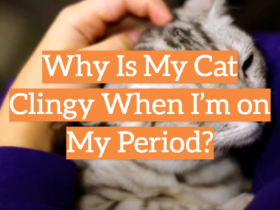

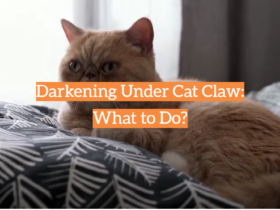
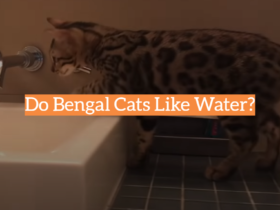
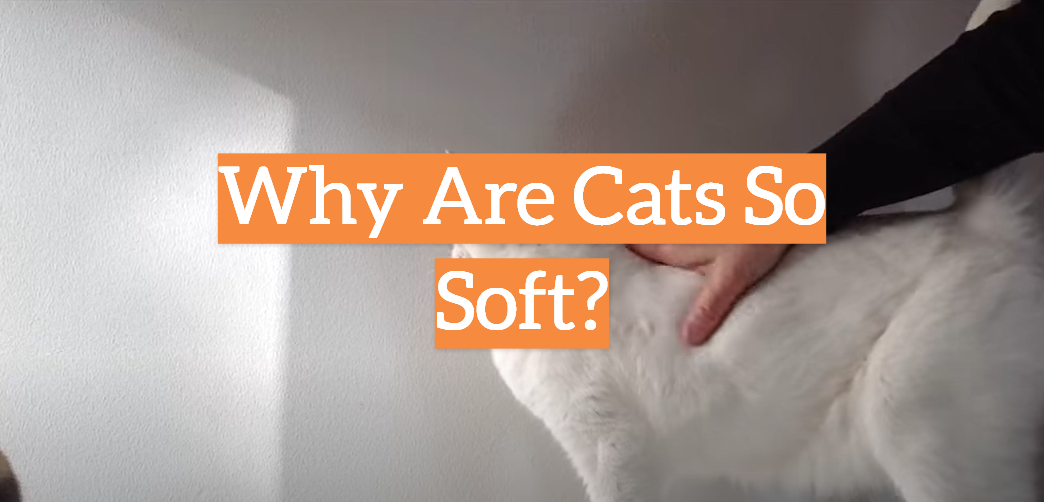
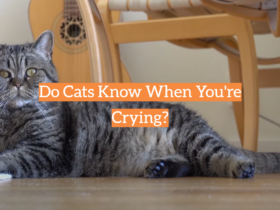
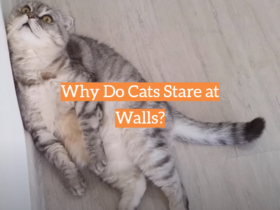
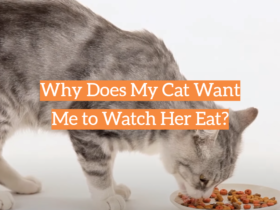
I adopted the most precious grey tabby kitten named Luna a few months back. Of all her adorable features, the one that stood out most was just how irresistibly soft and fluffy her fur coat is! I couldn’t stop gently petting her during cuddles and playtime, marveling at the silkiness. A little reading revealed the key to such cozy fur lies in natural oils from skin glands that distribute throughout the hair, conditioning it into plushness. Luna also meticulously grooms herself often, spreading those nourishing oils thoroughly with her scratchy tongue. Beyond hydrating skin and fur, the licking action teases hairs apart into that irresistible, cottony-looking fluff too! Now I make sure to supplement Luna’s self-pampering with regular brushing and occasional baths with cat-safe moisturizing shampoos. My efforts keep her baby-soft coat perfectly primed for maximum snuggling!
From the moment I first held rescue kitten Muffin at the shelter, I was amazed by how irresistibly plush and downy-soft her unique fur coat felt. Beyond daily grooming habits alone, research says Mittens likely boasts a genetic advantage contributing to her exceptional plushness too. Apparently certain cat breeds or mixed breed characteristics, as well as specific genes can dictate fur texture ranging from ultra fine to more dense and fluffy. Traits are then passed down for potentially maximized fluff! In Mittens’ case, her refined single coat lacks the ruff outer hairs that can compromise softness. Regular brushing to prevent knots or tangles likewise helps maintain coat lushness. Of course sweet little Muffin started purring away with face scritches the moment I lifted all 10 ounces of downy fur into my arms! Needless to say, that velvety hug sealed the deal on this adoption!
I’ll never get over just how astoundingly lush, fluffy and soft my Himalayan cat Callie feels when cuddled up in my lap! From her snowy tummy to silky champagne-colored ears, it’s like nuzzling a living plush toy. I looked into the science behind such exceptional snuggly fur. Apparently the Himalayan gene yield a signature “point” coat colors coupled by a fine, dense undercoat for amplified insulation in cold mountain conditions. Now this adaptation makes for exquisite softness as house pets instead! Regular grooming to evenly distribute skin oils throughout each fur layer optimizes the sumptuous silky texture too. No wonder I can’t resist constantly petting and massaging Callie during our bonding time despite the creamy fur lingering on every black shirt! Her sweet purring just melts me every time.
Soon after adopting tiny tabby kitten Theo, I was amazed by how irresistibly soft and silken his coat felt during daily cuddles and playtime compared to adult cats I’d met. Beyond Theo’s meticulous self-grooming spreading skin oils, research says kittens also enjoy a temporary layer of fluffy baby fur for amplified warmth that later sheds off. So these cozy, downy “kitten coats” account for that ultra plushness in the beginning! Regular brushing teases this fur apart for maximum floof too. Of course Theo’s cute habit of wiggling joyously into every stroke and scritch just makes the experience even more precious. I know one day his full adult coat will lose that extra fluffy kitten advantage. But in the meantime, I’m cherishing every snuggly moment of peachy fur bliss!
Of all the kittens my daughter and I played with visiting the shelter, fluffy grey Truffles felt exceptionally silky, soft and plush during every cuddle! I learned cats like her boast a genetic advantage contributing to such wonderful fur texture. Breeds featuring an undercoat layer along with skin oil distribution create maximized fluff potential. Apparently Truffles has little guard hairs compromising her plushness too! Regular grooming habits distribute oils evenly while teasing that fur apart for literal fuzziness. No wonder Truffles melted into my arms the instant I lifted her for a nuzzle test, vibrating with head to toe purrs! I’m just grateful shelters allow and even encourage “petting the merchandise” tests for adopting, otherwise how could I resist bringing home this lusciously snuggly angel?!
After adopting fluffy buff tabby kitten Ollie, I became utterly addicted to stroking his irresistibly soft and silken fur! Beyond diligent grooming spreading skin oils evenly throughout, research reveals kittens like Ollie also temporarily enjoy an extra fluffy layer of kitten fur for amplified insulation. So this downy peach undercoat grants kittens almost unfair levels of enhanced coziness! But even adult cats can maintain lovely coats through breed genetics too. Apparently Ollie boasts more downy hairs and fewer coarse protective outer hairs. Regular brushing keeps it all teased apart for prime plushness! No wonder Ollie melts into my gentle strokes with blissful purrs whenever I can’t resist indulging in his kitteny fur. Got to reap these maximum fuzzies while they last!
I’ll never forget when my daughter first placed new rescue kitten Luna into my hands at the shelter. Beyond her precious squeaky mews, what stood out most was the irresistible silkiness of her grey tabby fur begging to be stroked! Luna boasts a sublimely soft single coat lacking stiff guard hairs that can compromise plush texture over time. And as a young kitten, her coat enjoys an extra fluffy boost of temporary fur too. She melted right into my gentle pets with a roaring motor purr! Regular grooming habits spreading skin oils evenly throughout each fur layer keep it all conditioned to silky perfection as well. No wonder Luna got swiftly snatched up once other visitors experienced the same irresistible siren call of her lush baby fur! No doubt she’ll remain the snuggle queen of some lucky adopter’s heart for life.
After finding injured kitten Mittens under my porch last fall, I nursed her back to health as she became more active everyday. Of all her sweet features, the one that stood out most was just how irresistibly soft and fluffy her fur coat is! I can’t stop gently petting her during playtime, marveling at the silkiness. Research reveals the key to such plush fur lies in natural oils from skin glands that distribute throughout the hair, conditioning it into coziness. Mittens also meticulously grooms herself often, spreading those nourishing oils through the coat while teasing apart knots. Beyond just hydrating skin and fur, the licking action separates hairs into irresistible fluff too! Now I make sure to supplement Mittens’ self-pampering with regular brushing and occasional baths with cat-safe shampoos. My efforts will keep her baby-soft fur perfectly primed for maximum snuggling forever!
Soon after rescuing snowy kitten Callie off the streets last winter, I was amazed by how irresistibly soft and downy her fur felt during daily cuddles and playtime. Through some reading I learned kittens like Callie enjoy an extra fluffy layer of fur for warmth that will shed off later. So these temporary “kitten coats” account for their unfair levels of plushness! Regular grooming habits distribute skin oils evenly as well, keeping each delicate hair conditioned to silken perfection. And of course Callie’s happy habit of wiggling joyously into every stroke just makes the experience even more precious. I know one day her full adult coat will lose that extra fuzzy advantage. But for now Callie remains the fluffiest little cotton ball of nonstop purring snuggles!
When my niece brought over her new playful kitten Coco, I was not prepared for just how irresistibly soft and fine her fur would feel too! Beyond diligent self-grooming, research reveals cats like Coco enjoy great genetic advantage for exceptionally plush coats. Apparently certain breeds, skin and hair traits dictate texture ranging from fluffy to sleek. Those characteristics then pass down for potentially maximized fur lusciousness! In Coco’s case, she boasts a very refined single coat lacking the coarse outer hairs that can compromise silkiness over time. Regular brushing prevents knots as well, helping maintain coat lushness. No wonder hyper little Coco calms right into my arms the instant I lift all 10 ounces of velvety fur into a nuzzle test! That downy hug gets her every time.
When my daughter first placed rescue kitten Truffles into my hands, what stood out beyond her sweet squeaks was the irresistible silkiness of her fur begging to be stroked! Truffles boasts a sublimely soft single coat lacking any stiff guard hairs that can compromise plush texture over time. And as a young kitten, she’s enjoying an extra fluffy boost of fur too. Truffles melted right into my gentle pets with a roaring motor purr! Regular grooming habits spreading skin oils evenly throughout each layer keep it conditioned to perfection. No doubt Truffles will remain a blissful snuggle bug granting some lucky adopter countless cuddles for life ahead thanks to that luscious baby fur advantage!
I’ll never get over just how wonderfully soft and floofy my cat Callie’s fur coat feels when she curls up in my lap! From her snowy tummy to silky ears, it’s like petting a living plush creature. Research says Callie’s breed boasts a signature “point” coat color coupled by a fine, dense undercoat for amplified warmth. Now this adaptation makes for exquisite softness as a house pet instead! Regular grooming to evenly distribute skin oils throughout each fur layer optimizes the sumptuous texture too. No wonder I can’t resist constantly petting Callie during our bonding time despite the creamy fur lingering on every black shirt! Her sweet purring just melts me every time.